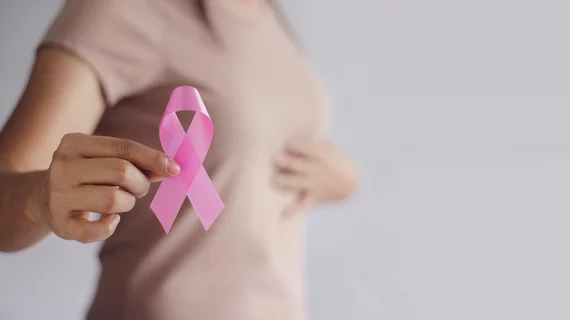MRI scans help researchers predict 10-year breast cancer recurrence
Radiomic analysis can extract mounds of information from breast MRIs and help researchers predict if a patient’s cancer is likely to return 10 years after treatment.
That’s according to Penn Medicine researchers, who extracted detailed biomarker information from MRI scans to gain insight into the cellular makeup of individual tumors. The algorithm, described in Clinical Cancer Research, may not replace the need for biopsies, but it could significantly improve the “gold standard” of care, researchers argued.
“We’ve just touched the tip of the iceberg,” Despina Kontos, PhD, professor of Radiology at Penn Medicine, said in a news release. “Our results and the validation study give us confidence that there are many opportunities for these markers to be used in a prognostic and potentially a predictive setting.”
Breast cancer can be hard for clinicians to diagnose. Tumors may be different from patient to patient, but the cells within an individual’s tumor may be even more diverse. And biopsies, while effective, are often painful and only gather a fraction of the cells within a tumor.
Utilizing radiomics, which uses an algorithm to extract many features from medical images invisible to radiologists, may help overcome these limitations.
“The method we currently have for choosing the appropriate treatment for patients with breast cancer is not perfect, so the more steps we can take toward more personalized treatment approaches, the better,” Kontos said in the statement.
The researchers retrospectively reviewed 95 MRI scans performed in a 2002-2006 clinical trial at Penn Medicine. For each woman, the team created a signal enhancement ratio map and extracted imaging features quantifying their relationship to conventional biomarkers and patient outcomes.
In total, Kontos et al. included 60 radiomic features, or biomarkers. Their radiomic algorithm analyzed that data and could predict recurrence-free survival after 10-year follow-up. Those results were validated in an independent sample of 163 women with breast cancer taken from a publicly available dataset.
“Our study shows that imaging has the potential to capture the whole tumor’s behavior without doing a procedure that is invasive or limited by sampling error,” lead author Rhea Chitalia, a PhD candidate in the school of engineering and applied science at Penn, said in the statement.

